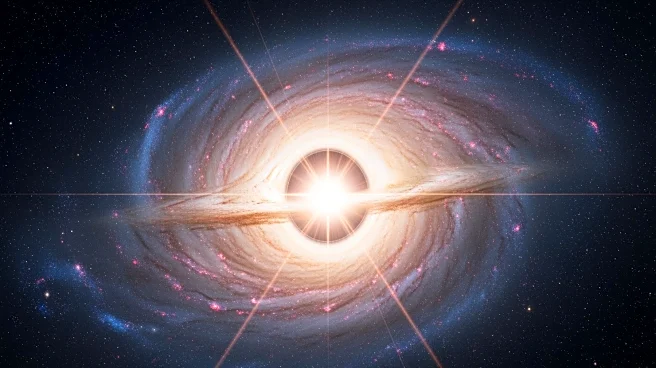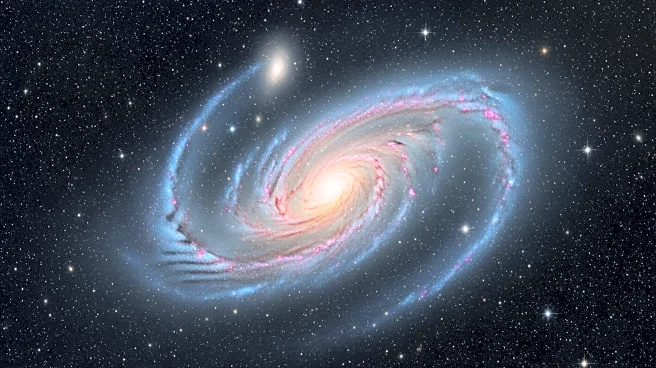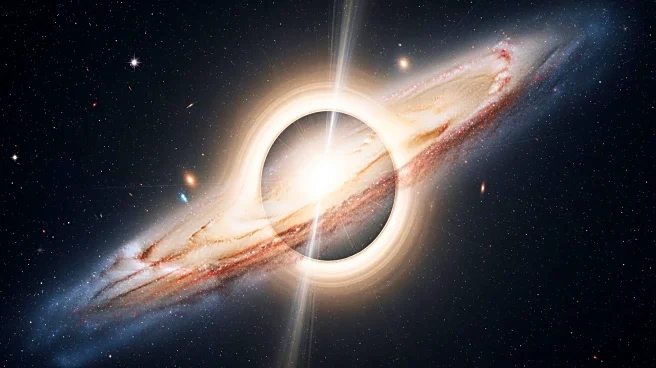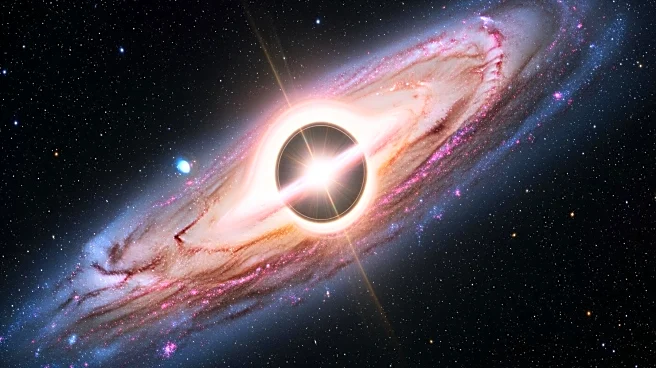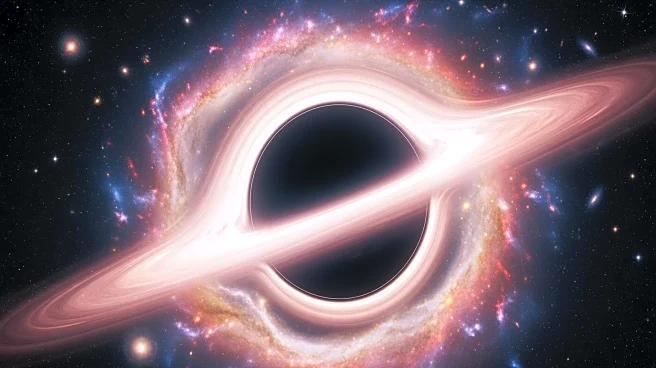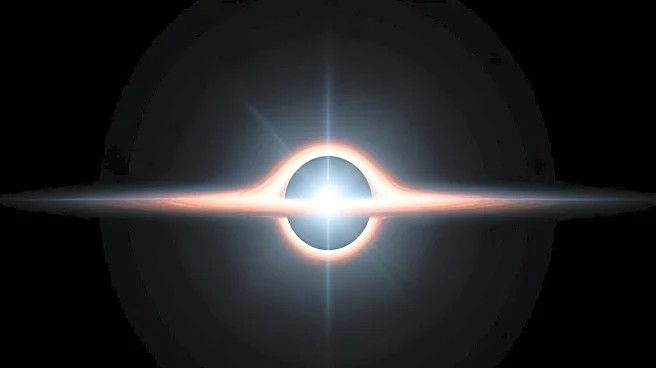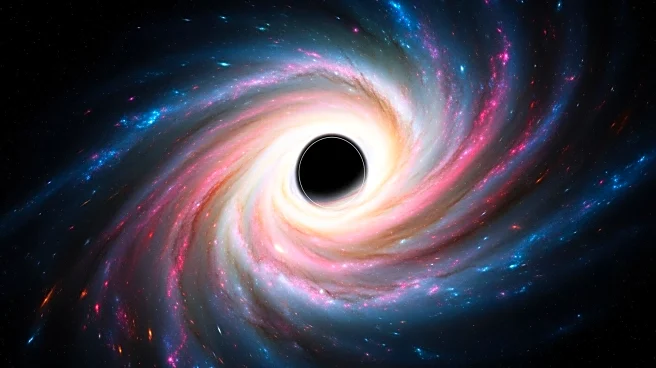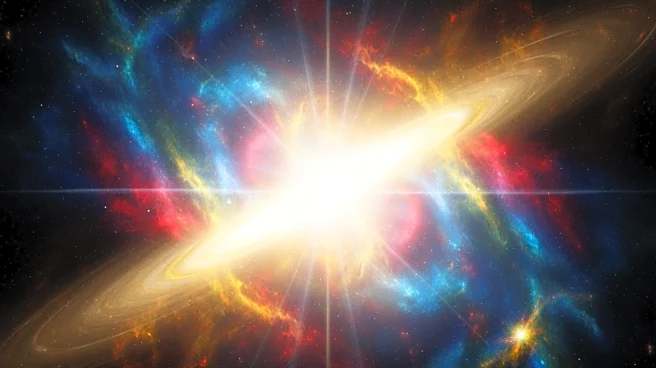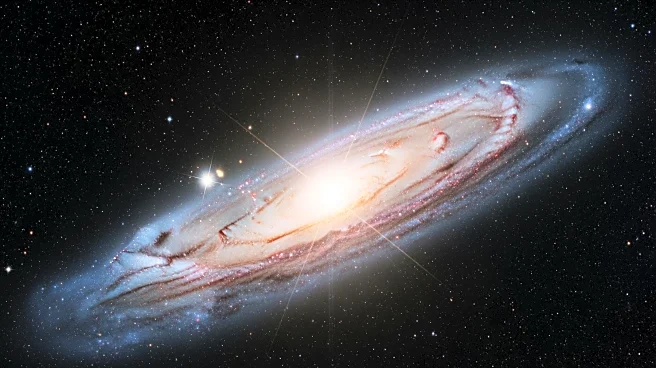What's Happening?
A supermassive black hole, located 10 billion light-years away, has produced a record-breaking energy flare, potentially the most powerful and distant ever observed. This event, identified as J2245+3743,
may be a tidal disruption event (TDE), where a black hole consumes a star. The flare, observed by the Zwicky Transient Facility and other telescopes, shone up to 30 times brighter than previous flares, with a luminosity equivalent to 10 trillion suns. The black hole is estimated to be over 500 million times the mass of the sun. The flare's brightness and distance make it a unique observation in the study of active galactic nuclei (AGN).
Why It's Important?
This discovery is significant for astrophysics as it challenges existing understanding of black hole behavior and energy emissions. The unprecedented brightness and distance of the flare provide new insights into the dynamics of supermassive black holes and their interactions with surrounding matter. This event could lead to advancements in the study of TDEs and AGNs, potentially influencing theories about galaxy formation and evolution. The findings may also impact future astronomical observations and the development of technologies to detect and analyze such distant cosmic phenomena.
What's Next?
Researchers will continue to monitor the flare as it fades, aiming to confirm its classification as a TDE. Further analysis could reveal more about the processes occurring in the vicinity of supermassive black holes. The ongoing study may also inspire new observational strategies and technologies to detect similar events in the future. The scientific community will likely engage in discussions to reassess models of black hole activity and their role in the universe.


